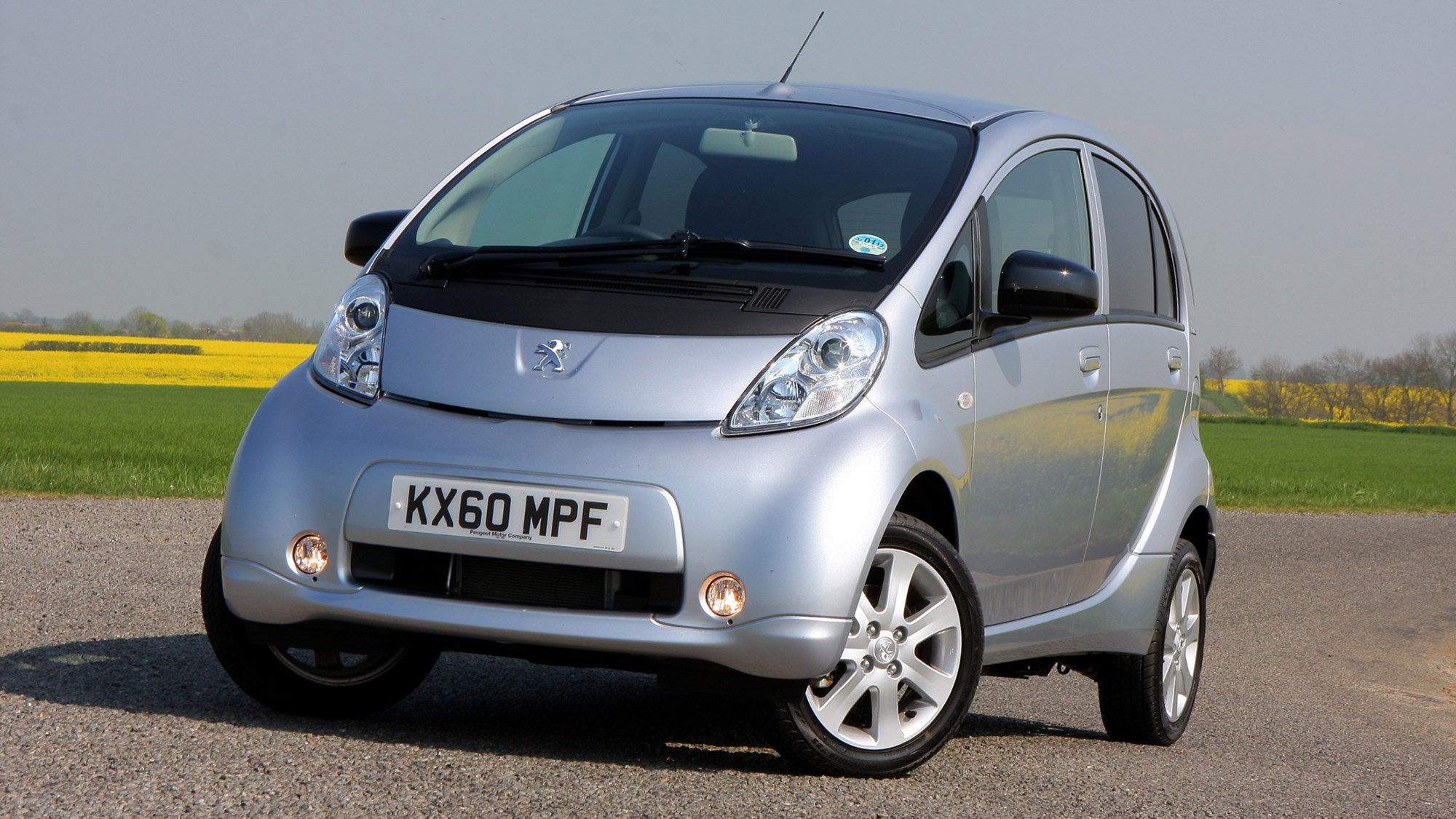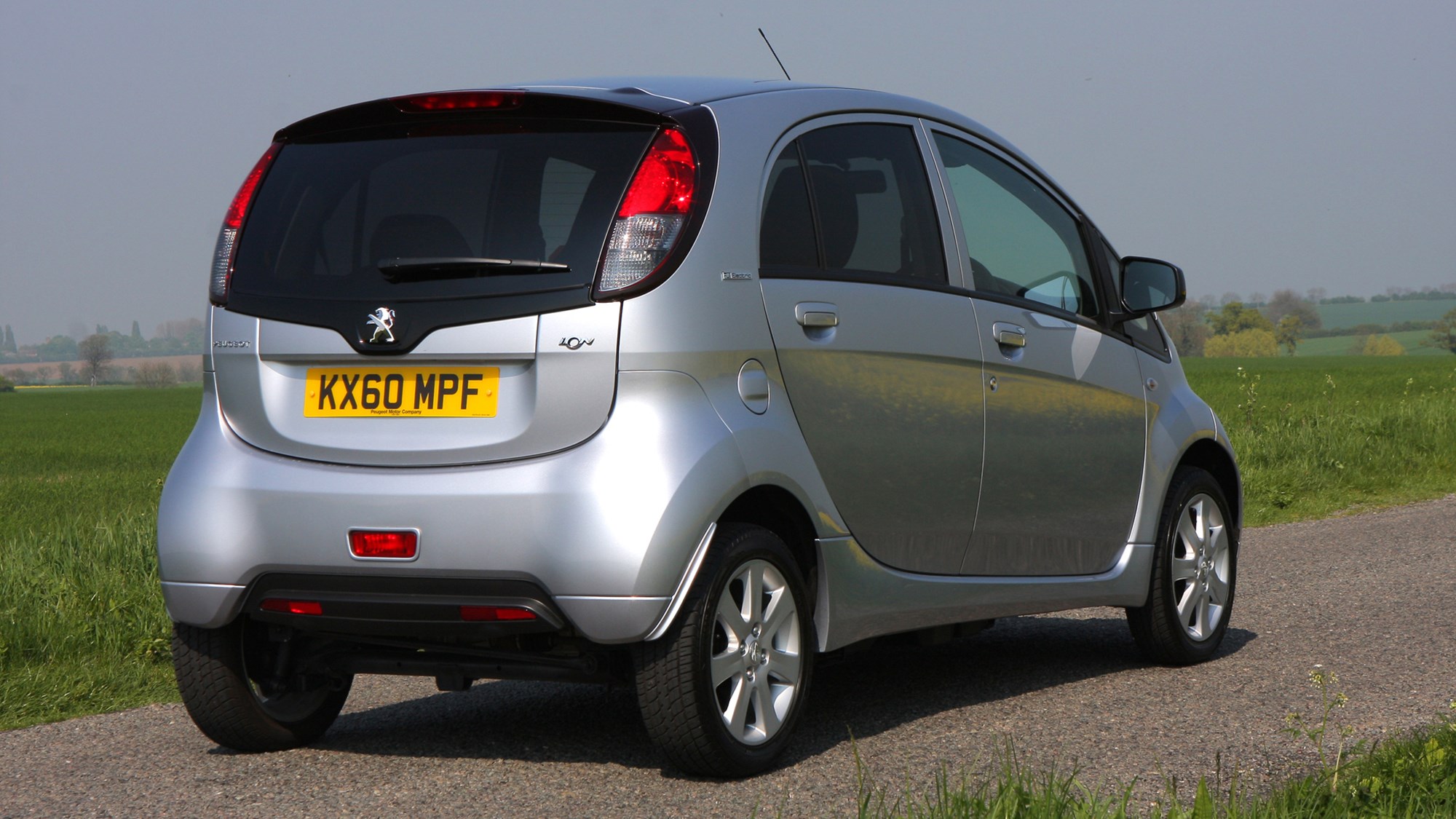► Mitsubishi tech, Peugeot badge and dealers
► Short range, simple tech
► Early-adopter appeal soon waned
There’s a huge range of EVs from Peugeot now – the e-208, e-2008, the electrified vans and MPVs and of course, the hybrids. You’d think this was a new age for the French marque – but in fact, the 2009 Ion is Peugeot’s first electric car…
Isn’t the Peugeot Ion a Mitsubishi iMiEV?
Essentially, yes it is. Just as Peugeot (and Citroen) created re-nosed versions of Mitsubishi’s Outlander SUV, so the PSA twins have their take on the electric iCar. But like the 4007 and C-Crosser 4x4s, PSA has also undertaken its own development work on the car to improve the aspects it didn’t like.
Mitsubishi subsequently revised the iMiEV to incoporate Peugeot and Citroen’s improvements – not that you’ll find many of these minimalist EVs, regardless of badge.

The French firms’ main improvements allowed the small car to achieve a four star Euro NCAP rating – Peugeot-Citroen has fitted ESP, seat belts warning chimes, new front and rear bumpers, and has made changes to the car’s structure. There’s some trim and colour tweaks too, and there’s just a single D gearbox setting for forward drive, rather than the iMiEV’s three. And finally project leader on the Ion, Philippe Barriac, revealed that sensor tweaks to the regenerative braking system have improved the car’s by 30% range.
Does it cost the same as a Mitsubishi iMiEV then?
New sales ended in 2018. We use the word ‘sales’ loosely, too – the number that found homes in the UK is in the hundreds, not thousands. Mitsubishi slashed the price of the iMiEV to match the contemporary Nissan Leaf, but Peugeot insisted on leasing this car instead of selling it for most of its life.
You can pick up an Ion for around £6000 to £9000 now, but as when new it suffers from being overshadowed by the larger, more sophisticated and simply better Nissan Leaf, which is about the same price.
Even so, if you find a secondhand Peugeot Ion for a reasonable price, it may tempt you into running an electric car for errands and short trips.
Okay, but is it actually any good?
Let’s start with the limitations, one of which is the fact that underneath it’s a Mitsubishi iCar. And although the iCar is a great little city runabout, it’s a sub-£10k city car so the plastics and interior quality aren’t really worthy of the (lease) price. However, it will seat four people (there are only four seats) in reasonable comfort, and there’s lots of glass and lots of headroom so it doesn’t feel too cramped.
As for the electric part, Peugeot reckons you have a potential 93 mile range, which is way more than enough for the average daily journeys – the claims are 90% of trips are under 38 miles and 60% are under 20 miles. Meaning there’s more than enough juice for the average school run, shopping trip or commute to work. Just watch the range if you have the heating or air-con on – the former could zap 5-45% of your range, and the latter can swallow 5-25%, according to Peugeot. As for recharging, a household plug will have you at full capacity in six hours, while a quick charge facility could give you 50% in just 15 minutes.
Of course a straight comparison with a conventionally powered car won’t put it in the best light, but this is a specific car with a specific purpose, so although it’ll lean round corners and only do 80mph, that’s absolutely missing the point. Around town there’s enough initial grunt to keep up with traffic flow quite easily, it rides reasonably well despite the short wheelbase, and because it’s a Mitsubishi underneath it’s got the best steering I’ve experienced in a Peugeot in a long time.
Refinement is fine, too, even though the lack of engine noise (there’s a faint hum from under the bonnet) brings all the other road and tyres sounds into sharp focus. But the silence and novelty of electric cars is still new and it’s such a joy to quietly drive around that it just brings calm and serenity to your car. Of course, that might change when you’re stuck in traffic.
Verdict
The problem faced by the Ion (and the iMiEV and Citroen C-Zero) is that the Nissan Leaf makes more sense and feels more substantial – along with Renault’s accomplished and long-lived Zoe, both of which offer something bigger and more conventional in terms of packaging, with higher-quality interiors too.
As a stopgap, it left Peugeot with a simple, marketable electric city car until the now ubiquitous Stellantis EV platform was ready. With ambitions to sell 500 a year in the UK, the fact is that it was still available almost a decade after launch and five years after the base iCar had ceased production. It wasn’t a success in the face of larger, cheaper rivals.

On the plus side, obscurity and simplicity may mean you can find a cheap used one. At which point it once again serves as a stopgap until you’re ready to commit fully to electric. And it is, at least, just a little bit different.